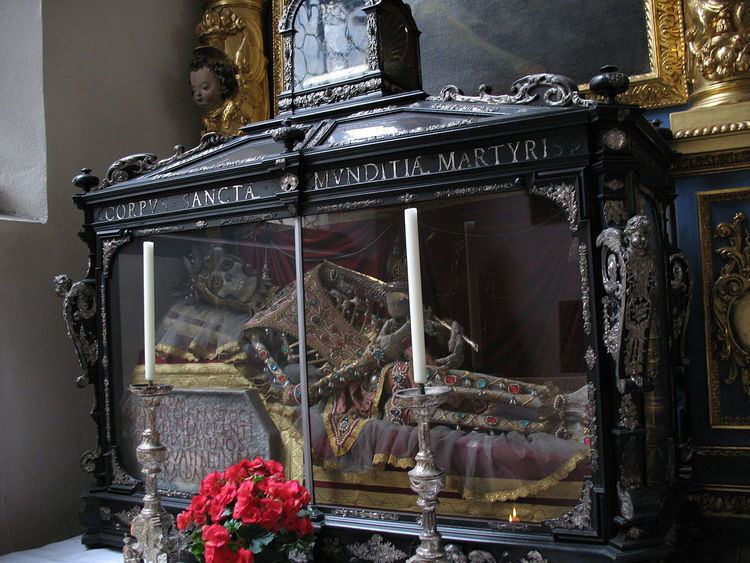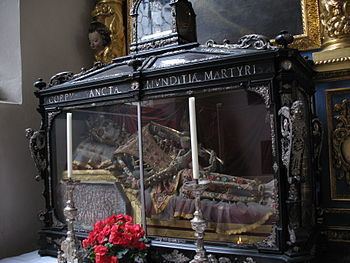Name Munditia Munditia | Feast 17 November | |
 | ||
Patronage single, unmarried women | ||
Venerated in Roman Catholic Church | ||
Saint Munditia (Mundita) is venerated as a Christian martyr. Her relics are found in a side altar at St. Peter's Church (known as “Old Peter,” Alter Peter) in Munich. They consist of a gilt-covered and gem-studded skeleton, located in a glass case, with false eyes in her skull, which is wrapped in netting. Jewels cover the mouth of the relic’s rotten teeth.

Her relics were translated to Munich from Rome in 1675 from the catacombs of Cyriaca. They were transferred to her Baroque Era-shrine which was consecrated on September 5, 1677.
The inscription on the stone slab that originally sealed the arcosolium in the catacombs and that is now located below the head of the skeleton reads:
DDM MUNDICIE PROTOGENIE BENEMERENTI QUAE VIXIT ANNOS LX QUAE IBIT IN PACE XV KAL D APC „In devout remembrance of Munditia Protogenia. The commendable. Who lived 60 years. Who passed peacefully into eternity 15 days before the Calends of December APC“
The meaning of “APC” is unclear. The Roman document of authenticity states that it means “ASCIA PLEXA CAPITA” (“beheaded with a hatchet”), describing the manner of her martyrdom. APC may also refer to: "ANDRONICO PROBO CONSULIBUS”, referring to the fact that she died during the consulate of Andronicus and Probus, thus making her date of death 310 CE.
In 1804, her relics were concealed behind a wooden shrine, but this was removed in 1883, restoring interest in her cult. Her feast day is now celebrated annually with a High Mass and a procession with candles.
